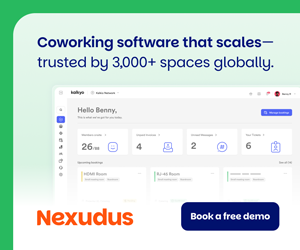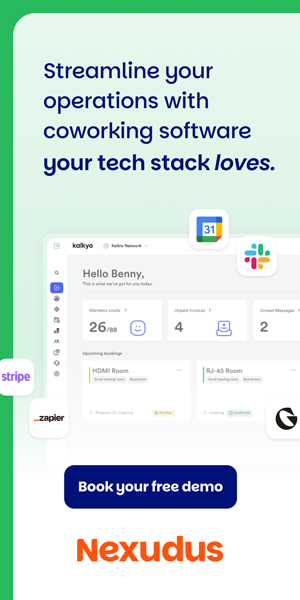For shared workspace and coworking operators, investing in technology has always required a careful balance between improving service and protecting the bottom line.
One area where the numbers are beginning to align is AI-powered security. Once seen as a nice-to-have, these tools are now helping operators justify tech spending by offering real benefits on two fronts: safety and operational efficiency.
Safety is increasingly important to today’s members. Whether they are independent professionals, startup teams, or corporate clients, people want to feel that their workspace is secure. At the same time, operators are looking for ways to do more with leaner teams. This is where AI-powered security comes in, as it helps deliver peace of mind while also making the day-to-day easier to manage.
Real-Time Monitoring That Lightens the Load
Traditional surveillance systems have always relied on human oversight; someone watches the cameras or reviews hours of footage after an incident. But AI surveillance tools change that dynamic, because these systems can recognize patterns, detect unusual behavior, and send alerts to staff in real time.
For example, if someone tries to enter a restricted area or loiters in a rarely used part of the building, the system can flag it immediately. That means a faster response, fewer blind spots, and fewer hours spent manually reviewing video. The result is a more responsive security presence without the need to hire additional staff.
Smarter Access, Fewer Touchpoints
AI is also making access control smarter and more seamless. Systems that use facial recognition or mobile credentials reduce the need for physical keys, badges, or check-ins. Members move through spaces without friction, and guests can be pre-authorized with temporary credentials.
This streamlines operations and also reduces the need for someone to manage the front desk during every shift, so staff can focus on creating a great member experience instead of handling basic administrative tasks. These access systems also log who enters and exits in real time, creating clear records without manual data entry.
Cutting Costs While Saving Energy
One of the less obvious benefits of AI security systems is how they can interact with other building systems. Some are able to communicate with lighting and HVAC controls. When the system detects that a room is empty, it can automatically adjust lighting or temperature settings. This avoids wasting energy and can have a noticeable impact on monthly utility bills.
For operators working to reduce overhead and meet sustainability goals, this kind of automated adjustment offers a quiet but powerful advantage. It also creates a workspace that feels modern and responsive to the needs of its members.
Appealing to Safety-Conscious Members
Security features have become a selling point. For many potential members, especially in urban areas or buildings with 24/7 access, visible and intelligent security measures provide added comfort.
Mentioning AI-driven security in tours, marketing materials, or onboarding emails shows prospective members that the space is proactive and cares about their well-being. That sense of safety can be the final nudge for someone deciding between multiple coworking options.
Turning Security Data Into Operational Insights
AI security systems do more than monitor threats, because they also track usage patterns, foot traffic, and occupancy trends — the kind of data that can help operators make smarter decisions.
If one entrance is used more than others, maybe that is the right place to invest in additional amenities or signage. If certain areas sit empty, they could be reconfigured for more popular uses. These insights come without additional effort because the security system is already gathering the data.
Over time, this information can shape better layouts, reduce overcrowding, and even influence pricing or membership options. It adds long-term value far beyond its original purpose.
Technology That Earns Its Keep
AI security systems are often seen as a cost, but the real picture is more nuanced: these tools help operators reduce labor expenses, lower energy costs, improve member safety, and gather insights that support better decision-making. That makes them not just a safety tool, but a smart investment.
As shared workspaces grow and member expectations continue to progress, AI-powered security is one of the few technologies that can support both sides of the equation. It protects people and strengthens operations at the same time.
Investing in AI security may not be flashy, but it builds trust, saves money, and helps operators stay one step ahead. That is a story any operator can feel confident telling when it’s time to make a case for smarter tech spending.


 Dr. Gleb Tsipursky – The Office Whisperer
Dr. Gleb Tsipursky – The Office Whisperer Nirit Cohen – WorkFutures
Nirit Cohen – WorkFutures Angela Howard – Culture Expert
Angela Howard – Culture Expert Drew Jones – Design & Innovation
Drew Jones – Design & Innovation Jonathan Price – CRE & Flex Expert
Jonathan Price – CRE & Flex Expert












